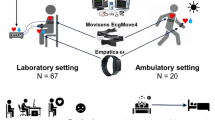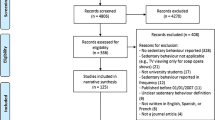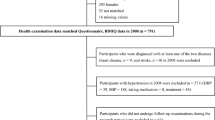Abstract
Wearable devices make self-monitoring easier by the users, who usually tend to increase physical activity and weight loss maintenance over time. But in terms of behavior adaptation to these goals, these devices do not provide specific features beyond monitoring the achievement of daily goals, such as a number of steps or miles walked and caloric outtake. The purpose of this study is twofold. By analyzing a large dataset of signals collected by these devices, we identify significant clusters of similar behavior patterns related to user physical activities. We then examine specific patterns of step count in the context of recommendation of habits that more likely give rise to weight loss effects. The evaluation of the effectiveness of these personalized recommendations, based on a comparative study, proves how a recommender system based on the reinforcement learning paradigm is able to guarantee better performance for this task by balancing the trade-off between long-term and short-term rewards.











Similar content being viewed by others
References
Ainsworth, B.E., Haskell, W.L., Herrmann, S.D., Meckes, N., Bassett, D.R., Tudor-Locke, C., Greer, J.L., Vezina, J., Whitt-Glover, M.C., Leon, A.S.: 2011 compendium of physical activities: a second update of codes and MET values. Med. Sci. Sports Exerc. 43(8), 1575–1581 (2011)
Althoff, T.: Population-scale pervasive health. IEEE Pervasive Comput. 16(4), 75–79 (2017). https://doi.org/10.1109/MPRV.2017.3971134
Althoff, T., White, R.W., Horvitz, E.: Influence of pokémon go on physical activity: study and implications. J. Med. Internet Res. 18(12), e315 (2016)
Althoff, T., Sosic, R., Hicks, J.L., King, A.C., Delp, S.L., Leskovec, J.: Large-scale physical activity data reveal worldwide activity inequality. Nature 547, 336 (2017). https://doi.org/10.1038/nature23018. EP –
Baranowski, T.: Validity and reliability of self report measures of physical activity: an information-processing perspective. Res. Q. Exerc. Sport 59(4), 314–327 (1988). https://doi.org/10.1080/02701367.1988.10609379
Baron, J.: Nudge: Improving decisions about health, wealth, and happiness. Thaler, Richard H. & Sunstein, Cass R. (Eds.). Yale University Press: New haven, CT, 2008 (2010). https://yalebooks.yale.edu/book/9780300122237/nudge
Berkovsky, S., Freyne, J., Coombe, M.: Physical activity motivating games: be active and get your own reward. ACM Trans. Comput. Hum. Interact. 19(4), 32:1–32:41 (2012)
Bhaskaran, K., dos Santos-Silva, I., Leon, D.A., Douglas, I.J., Smeeth, L.: Association of BMI with overall and cause-specific mortality: a population-based cohort study of 3.6 million adults in the UK. Lancet Diabetes Endocrinol. 6(12), 944–953 (2018). https://doi.org/10.1016/S2213-8587(18)30288-2
Bravata, D.M., Smith-Spangler, C., Sundaram, V., Gienger, A.L., Lin, N., Lewis, R., Stave, C.D., Olkin, I., Sirard, J.R.: Using pedometers to increase physical activity and improve health: a systematic review. JAMA 298(19), 2296–2304 (2007)
Brodie, M., Pliner, E., Ho, A., Li, K., Chen, Z., Gandevia, S., Lord, S.: Big data vs. accurate data in health research: large-scale physical activity monitoring, smartphones, wearable devices and risk of unconscious bias. Med. Hypotheses 119, 32–36 (2018). https://doi.org/10.1016/j.mehy.2018.07.015
Bulling, A., Blanke, U., Schiele, B.: A tutorial on human activity recognition using body-worn inertial sensors. ACM Comput. Surv. 46(3), 33:1–33:33 (2014). https://doi.org/10.1145/2499621
Catenacci, V.A., Ogden, L.G., Stuht, J., Phelan, S., Wing, R.R., Hill, J.O., Wyatt, H.R.: Physical activity patterns in the national weight control registry. Obesity 16(1), 153–161 (2008)
Chekroud, S.R., Gueorguieva, R., Zheutlin, A.B., Paulus, M., Krumholz, H.M., Krystal, J.H., Chekroud, A.M.: Association between physical exercise and mental health in 1.2 million individuals in the USA between 2011 and 2015: a cross-sectional study. Lancet Psychiatry (2018). https://doi.org/10.1016/S2215-0366(18)30227-X
Connolly, J., Romano, T., Patruno, M.: Effects of dieting and exercise on resting metabolic rate and implications for weight management. Fam. Pract. 16(2), 196–201 (1999). https://doi.org/10.1093/fampra/16.2.196
Dehghan, M., Merchant, A.T.: Is bioelectrical impedance accurate for use in large epidemiological studies? Nutr. J. 7, 26 (2008)
Demura, S., Sato, S.: Comparisons of accuracy of estimating percent body fat by four bioelectrical impedance devices with different frequency and induction system of electrical current. J. Sports Med. Phys. Fit. 55(1–2), 68–75 (2015)
Doherty, A., Jackson, D., Hammerla, N., Plötz, T., Olivier, P., Granat, M.H., White, T., van Hees, V.T., Trenell, M.I., Owen, C.G., Preece, S.J., Gillions, R., Sheard, S., Peakman, T., Brage, S., Wareham, N.J.: Large scale population assessment of physical activity using wrist worn accelerometers: The UK biobank study. PLOS ONE 12(2), 1–14 (2017). https://doi.org/10.1371/journal.pone.0169649
Evenson, K.R., Goto, M.M., Furberg, R.D.: Systematic review of the validity and reliability of consumer-wearable activity trackers. Int. J. Behav. Nutr. Phys. Act. 12(1), 159 (2015). https://doi.org/10.1186/s12966-015-0314-1
Ferguson, T., Rowlands, A.V., Olds, T., Maher, C.: The validity of consumer-level, activity monitors in healthy adults worn in free-living conditions: a cross-sectional study. Int. J. Behav. Nutr. Phys. Act. 12, 42 (2015)
Finkelstein, E.A., Haaland, B.A., Bilger, M., Sahasranaman, A., Sloan, R.A., Nang, E.E.K., Evenson, K.R.: Effectiveness of activity trackers with and without incentives to increase physical activity (TRIPPA): a randomised controlled trial. Lancet Diabetes Endocrinol. 4(12), 983–995 (2016). https://doi.org/10.1016/S2213-8587(16)30284-4
Fukuoka, Y., Zhou, M., Vittinghoff, E., Haskell, W., Goldberg, K., Aswani, A.: Objectively measured baseline physical activity patterns in women in the mPED trial: cluster analysis. JMIR Public Health Surveill. 4(1), e10 (2018)
Gilbert, R.O.: Statistical Methods for Environmental Pollution Monitoring. Van Nostrand Reinhold Co., New York (1987). (includes index)
Graells-Garrido, E., Ferres, L., Bravo, L.: The effect of pokémon go on the pulse of the city: a natural experiment (2016). arXiv:1610.08098
Greenlaw, R., Kantabutra, S.: Survey of clustering: algorithms and applications. Int. J. Inf. Retr. Res. 3(2), 1–29 (2013)
Jakicic, J., Clark, K., Coleman, E., Donnelly, J., Foreyt, J., Melanson, E., Volek, J., Volpe, S., American College of Sports Medicine: American college of sports medicine position stand. Appropriate intervention strategies for weight loss and prevention of weight regain for adults. Med. Sci. Sports Exerc. 33(12), 2145–2156 (2001)
Jakicic, J.M., Davis, K.K., Rogers, R.J., King, W.C., Marcus, M.D., Helsel, D., Rickman, A.D., Wahed, A.S., Belle, S.H.: Effect of wearable technology combined with a lifestyle intervention on long-term weight loss: the IDEA randomized clinical trial. JAMA 316(11), 1161–1171 (2016a)
Jakicic, J.M., Davis, K.K., Rogers, R.J., King, W.C., Marcus, M.D., Helsel, D., Rickman, A.D., Wahed, A.S., Belle, S.H.: Effect of wearable technology combined with a lifestyle intervention on long-term weight loss: the idea randomized clinical trial. JAMA 316(11), 1161–1171 (2016b)
Kamišalić, A., Fister, I., Turkanović, M., Karakatič, S.: Sensors and functionalities of non-invasive wrist-wearable devices: a review. Sensors 18(6), 1714 (2018). https://doi.org/10.3390/s18061714
Kaufman, L., Rousseeuw, P.J.: Finding groups in data: an introduction to cluster analysis. Wiley, New York (1990)
King, N.A., Caudwell, P., Hopkins, M., Byrne, N.M., Colley, R., Hills, A.P., Stubbs, J.R., Blundell, J.E.: Metabolic and behavioral compensatory responses to exercise interventions: barriers to weight loss. Obesity 15(6), 1373–1383 (2007). https://doi.org/10.1038/oby.2007.164
Konopka, A.R., Harber, M.P.: Skeletal muscle hypertrophy after aerobic exercise training. Exerc. Sport Sci. Rev. 42(2), 53–61 (2014)
Leijdekkers, P., Gay, V.: Improving user engagement by aggregating and analysing health and fitness data on a mobile app. In: Geissbühler, A., Demongeot, J., Mokhtari, M., Abdulrazak, B., Aloulou, H. (eds.) Inclusive Smart Cities and e-Health, pp. 325–330. Springer, Cham (2015)
Lewis, Z.H., Lyons, E.J., Jarvis, J.M., Baillargeon, J.: Using an electronic activity monitor system as an intervention modality: a systematic review. BMC Public Health 15, 585 (2015)
Liebman, E., Saar-Tsechansky, M., Stone, P.: Dj-mc: a reinforcement-learning agent for music playlist recommendation. In: Proceedings of the 2015 International Conference on Autonomous Agents and Multiagent Systems, International Foundation for Autonomous Agents and Multiagent Systems, pp. 591–599 (2015)
Lim, W.K., Davila, S., Teo, J.X., Yang, C., Pua, C.J., Blöcker, C., Lim, J.Q., Ching, J., Yap, J.J.L., Tan, S.Y., Sahlén, A., Chin, C.W.L., Teh, B.T., Rozen, S.G., Cook, S.A., Yeo, K.K., Tan, P.: Beyond fitness tracking: the use of consumer-grade wearable data from normal volunteers in cardiovascular and lipidomics research. PLOS Biol. 16(2), 1–18 (2018). https://doi.org/10.1371/journal.pbio.2004285
Lung, N.H., Institute, B.: Classification of overweight and obesity by BMI, waist circumference, and associated disease risks (2018). https://www.nhlbi.nih.gov/health/educational/lose_wt/BMI/bmi_dis.htm. Accessed 1 May 2018
Maier, E., Reimer, U., Laurenzi, E., Ridinger, M., Ulmer, T.: Smartcoping—a mobile solution for stress recognition and prevention. In: Bienkiewicz, M., Verdier, C., Plantier, G., Schultz, T., Fred, A.L.N., Gamboa, H. (eds.) HEALTHINF 2014—Proceedings of the International Conference on Health Informatics, ESEO, Angers, Loire Valley, France, 3–6 March, 2014, pp. 428–433. SciTePress (2014)
Majumder, S., Mondal, T., Deen, M.J.: Wearable sensors for remote health monitoring. Sensors (Basel) 17(1), 130 (2017)
Martin, S.S., Feldman, D.I., Blumenthal, R.S., Jones, S.R., Post, W.S., McKibben, R.A., Michos, E.D., Ndumele, C.E., Ratchford, E.V., Coresh, J., Blaha, M.J.: mActive: a randomized clinical trial of an automated mHealth intervention for physical activity promotion. J. Am. Heart Assoc. 4(11), e002239 (2015)
McDaniel, M., Anwar, M.: Zen\_space: a smartphone app for individually tailored stress management support for college students. In: Chen, H., Zeng, D.D., Karahanna, E., Bardhan, I. (eds.) Smart Health: International Conference, ICSH 2017, Hong Kong, China, June 26–27, 2017, Proceedings, pp. 123–133. Springer, Cham (2017)
Melanson, E.L., Keadle, S.K., Donnelly, J.E., Braun, B., King, N.A.: Resistance to exercise-induced weight loss: compensatory behavioral adaptations. Med. Sci. Sports Exerc. 45(8), 1600–1609 (2013)
Mirkin, B.: Choosing the number of clusters. Wiley Interdiscip. Rev. Data Min. Knowl. Discov. 1(3), 252–260 (2011)
Oyibo, K., Adaji, I., Orji, R., Olabenjo, B., Azizi, M., Vassileva, J.: Perceived persuasive effect of behavior model design in fitness apps. In: Proceedings of the 26th Conference on User Modeling, Adaptation and Personalization, pp. 219–228. ACM, New York, NY, USA, UMAP’18 (2018). https://doi.org/10.1145/3209219.3209240
Pantelopoulos, A., Bourbakis, N.: A survey on wearable biosensor systems for health monitoring. In: 2008 30th Annual International Conference of the IEEE Engineering in Medicine and Biology Society, pp. 4887–4890. IEEE (2008)
Patel, S.R., Hu, F.B.: Short sleep duration and weight gain: a systematic review. Obesity (Silver Spring) 16(3), 643–653 (2008)
Pontzer, H., Durazo-Arvizu, R., Dugas, L.R., Plange-Rhule, J., Bovet, P., Forrester, T.E., Lambert, E.V., Cooper, R.S., Schoeller, D.A., Luke, A.: Constrained total energy expenditure and metabolic adaptation to physical activity in adult humans. Curr. Biol. 26(3), 410–417 (2016)
Rabbi, M., Aung, M.H., Zhang, M., Choudhury, T.: Mybehavior: automatic personalized health feedback from user behaviors and preferences using smartphones. In: Proceedings of the 2015 ACM International Joint Conference on Pervasive and Ubiquitous Computing, pp. 707–718. ACM, New York, NY, USA, UbiComp’15 (2015). https://doi.org/10.1145/2750858.2805840
Reimer, U., Maier, E.: An application framework for personalised and adaptive behavioural change support systems. In: Röcker, C., Ziefle, M., O’Donoghue, J., Maciaszek, L.A., Molloy, W. (eds.) Proceedings of the 2nd International Conference on Information and Communication Technologies for Ageing Well and e-Health, ICT4AgeingWell 2016, Rome, Italy, April 21–22, 2016, pp. 152–159. SCITEPRESS (2016)
Reimer, U., Laurenzi, E., Maier, E., Ulmer, T.: Mobile stress recognition and relaxation support with smartcoping: user-adaptive interpretation of physiological stress parameters. In: 50th Hawaii International Conference on System Sciences, HICSS 2017, Hilton Waikoloa Village, Hawaii, USA, January 4–7, 2017, AIS Electronic Library (AISeL) (2017)
Ricci, F., Rokach, L., Shapira, B., Kantor, P.B.: Recommender Systems Handbook, 1st edn. Springer, Berlin (2010)
Rolls, B.J., Drewnowski, A., Ledikwe, J.H.: Changing the energy density of the diet as a strategy for weight management. J. Am. Diet Assoc. 105(5 Suppl 1), 98–103 (2005)
Romieu, I., Dossus, L., Barquera, S., Blottière, H.M., Franks, P.W., Gunter, M., Hwalla, N., Hursting, S.D., Leitzmann, M., Margetts, B., Nishida, C., Potischman, N., Seidell, J., Stepien, M., Wang, Y., Westerterp, K., Winichagoon, P., Wiseman, M., Willett, W.C.: Energy balance and obesity: what are the main drivers? Cancer Causes Control 28(3), 247–258 (2017)
Sallis, J.F., Saelens, B.E.: Assessment of physical activity by self-report: status, limitations, and future directions. Res. Q. Exerc. Sport 71(2 Suppl), 1–14 (2000)
Schäfer, H., Hors-Fraile, S., Karumur, R.P., Calero Valdez, A., Said, A., Torkamaan, H., Ulmer, T., Trattner, C.: Towards health (aware) recommender systems. In: Proceedings of the 2017 International Conference on Digital Health, pp. 157–161. ACM, New York, NY, USA, DH’17 (2017)
Shameli, A., Althoff, T., Saberi, A., Leskovec, J.: How gamification affects physical activity: Large-scale analysis of walking challenges in a mobile application. In: Proceedings of the 26th International Conference on World Wide Web Companion (WWW), pp. 455–463 (2017)
Shani, G., Gunawardana, A.: Evaluating Recommendation Systems, pp. 257–297. Springer, Boston (2011). https://doi.org/10.1007/978-0-387-85820-3_8
Smyth, B., Cunningham, P.: Marathon race planning: a case-based reasoning approach. In: Proceedings of the Twenty-Seventh International Joint Conference on Artificial Intelligence, IJCAI-18, International Joint Conferences on Artificial Intelligence Organization, pp. 5364–5368 (2018). https://doi.org/10.24963/ijcai.2018/754
Straiton, N., Alharbi, M., Bauman, A., Neubeck, L., Gullick, J., Bhindi, R., Gallagher, R.: The validity and reliability of consumer-grade activity trackers in older, community-dwelling adults: a systematic review. Maturitas 112, 85–93 (2018). https://doi.org/10.1016/j.maturitas.2018.03.016
Sutton, R.S., Barto, A.G.: Introduction to Reinforcement Learning, 1st edn. MIT Press, Cambridge (1998)
Swift, D.L., Johannsen, N.M., Lavie, C.J., Earnest, C.P., Church, T.S.: The role of exercise and physical activity in weight loss and maintenance. Prog. Cardiovasc. Dis. 56(4), 441–448 (2014)
Tang, L.M., Meyer, J., Epstein, D.A., Bragg, K., Engelen, L., Bauman, A., Kay, J.: Defining adherence: making sense of physical activity tracker data. Proc. ACM Interact. Mob. Wearable Ubiquitous Technol. 2(1), 37:1–37:22 (2018). https://doi.org/10.1145/3191769
Thibault, R., Genton, L.: Accuracy of bioelectrical impedance analysis to measure skeletal muscle mass. Clin. Nutr. 33(6), 1157 (2014). https://doi.org/10.1016/j.clnu.2014.08.004
Thomson, C., Nash, J., Maeder, A.: Persuasive design for behaviour change apps: issues for designers. In: Proceedings of the Annual Conference of the South African Institute of Computer Scientists and Information Technologists, pp. 43:1–43:10. ACM, New York, NY, USA, SAICSIT’16 (2016). https://doi.org/10.1145/2987491.2987535
Vildjiounaite, E., Kallio, J., Kyllönen, V., Nieminen, M., Määttänen, I., Lindholm, M., Mäntyjärvi, J., Gimel’farb, G.: Unobtrusive stress detection on the basis of smartphone usage data. Pers. Ubiquitous Comput. 22(4), 671–688 (2018). https://doi.org/10.1007/s00779-017-1108-z
Watkins, C.J.C.H., Dayan, P.: Q-learning. Mach. Learn. 8(3), 279–292 (1992)
Watson, N.F., Badr, M.S., Belenky, G., Bliwise, D.L., Buxton, O.M., Buysse, D., Dinges, D.F., Gangwisch, J., Grandner, M.A., Kushida, C., Malhotra, R.K., Martin, J.L., Patel, S.R., Quan, S.F., Tasali, E.: Joint consensus statement of the American academy of sleep medicine and sleep research society on the recommended amount of sleep for a healthy adult: methodology and discussion. J. Clin. Sleep Med. 11(8), 931–952 (2015)
Wiesner, M., Pfeifer, D.: Health recommender systems: concepts, requirements, technical basics and challenges. Int. J. Environ. Res. Public Health 11(3), 2580–2607 (2014)
Wing, R.R., Phelan, S.: Long-term weight loss maintenance. Am. J. Clin. Nutr. 82(1), 222S–225S (2005). https://doi.org/10.1093/ajcn/82.1.222S
World Health Organization: Global Recommendations on Physical Activity for Health. World Health Organization, Geneva (2010)
Yom-Tov, E., Feraru, G., Kozdoba, M., Mannor, S., Tennenholtz, M., Hochberg, I.: Encouraging physical activity in patients with diabetes: intervention using a reinforcement learning system. J. Med. Internet Res. 19(10), e338 (2017)
Zhao, Y., Kosorok, M.R., Zeng, D.: Reinforcement learning design for cancer clinical trials. Stat. Med. 28(26), 3294–3315 (2009). https://doi.org/10.1002/sim.3720
Zheng, G., Zhang, F., Zheng, Z., Xiang, Y., Yuan, N.J., Xie, X., Li, Z. (2018) Drn: a deep reinforcement learning framework for news recommendation. In: Proceedings of the 2018 World Wide Web Conference on World Wide Web, International World Wide Web Conferences Steering Committee, pp. 167–176
Zhou, M., Fukuoka, Y., Mintz, Y., Goldberg, K., Kaminsky, P., Flowers, E., Aswani, A.: Evaluating machine learning-based automated personalized daily step goals delivered through a mobile phone app: randomized controlled trial. JMIR Mhealth Uhealth 6(1), e28 (2018). https://doi.org/10.2196/mhealth.9117
Author information
Authors and Affiliations
Corresponding author
Additional information
Publisher's Note
Springer Nature remains neutral with regard to jurisdictional claims in published maps and institutional affiliations.
Rights and permissions
About this article
Cite this article
Gasparetti, F., Aiello, L.M. & Quercia, D. Personalized weight loss strategies by mining activity tracker data. User Model User-Adap Inter 30, 447–476 (2020). https://doi.org/10.1007/s11257-019-09242-7
Received:
Accepted:
Published:
Issue Date:
DOI: https://doi.org/10.1007/s11257-019-09242-7




